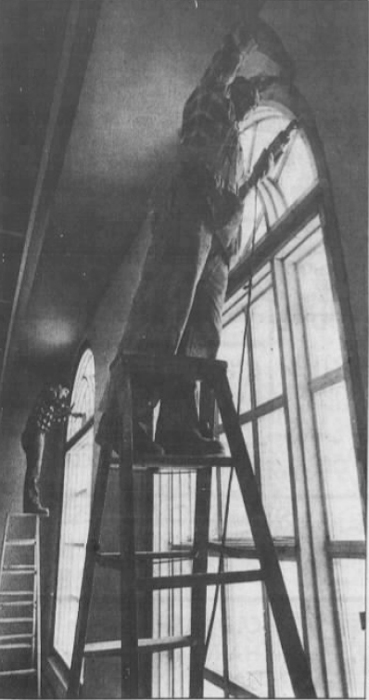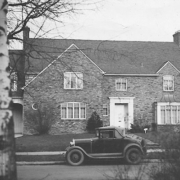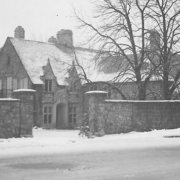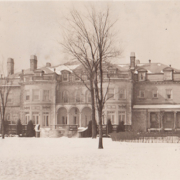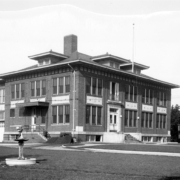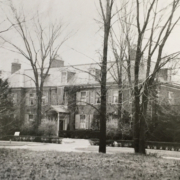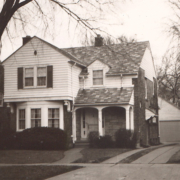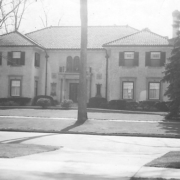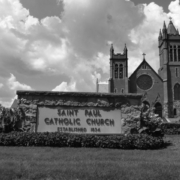Historical Architecture of Grosse Pointe – GP Woods & Shores Municipal Buildings
Last week we continued with our presentation as we explored the municipal buildings in the Farms and the City, both of which have a very different story to tell. The structure in the farms dates to 1916, while the original site for the municipal buildings in the city can be traced to 1920. This week we conclude our series as we visit the structures in the Woods and the Shores that were built during two very different eras. The facility in the Shores is the oldest municipal building in the Grosse Pointe communities.
Grosse Pointe Woods
The current municipal building in the Woods is the newest structure in the community. The original building (date of completion is not known) was located on the corner of Anita/Mack. As with all city structures in the area it was used to serve the citizens of the community and provided multiple services including being used as a voting precinct during the 1940’s. The current building (located at 20025 Mack Plaza) was completed on December 14, 1958. A new wing was then added in 1963. The photos below are from 1962 and 1964 Courtesy of: digital.library.wayne.edu.
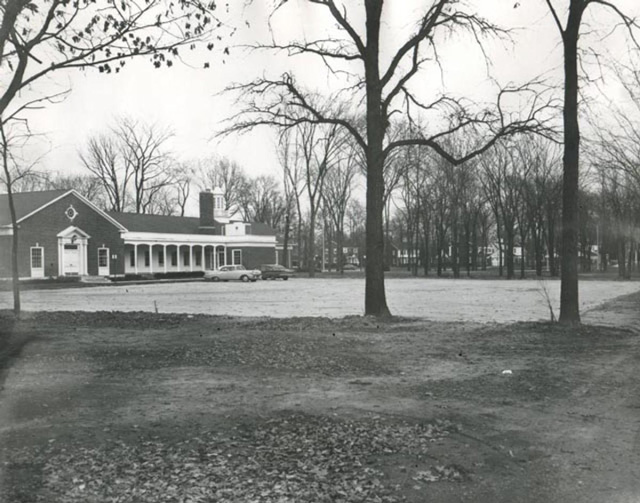
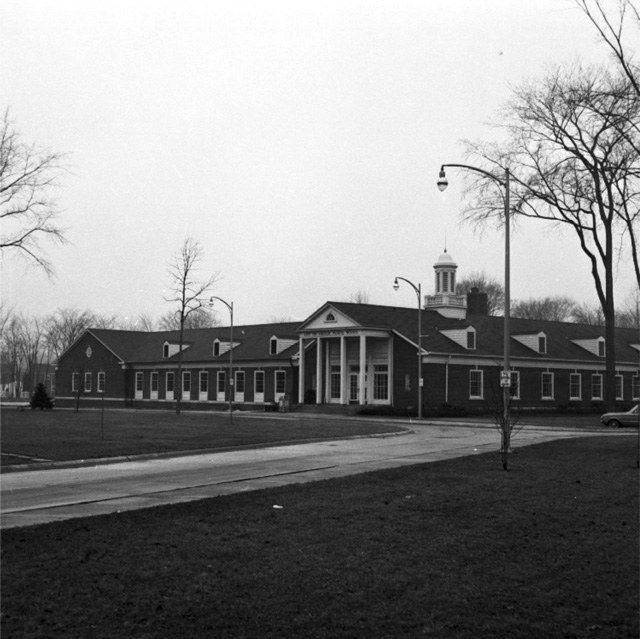
Grosse Pointe Shores
The origins of Grosse Pointe Shores dates to 1911, when the Village of Grosse Pointe Shores was incorporated on April 3, 1911. It is reported the Shores newly elected president, George Osius hosted the first Village Council meeting in his home on Tuesday April 11, 1911.
Four years later the communities municipal building, (located at 795 Lake Shore) was completed and dedicated on December 10, 1915. It is reported it had cost $22,000 to design and build (around $670,000 today) on a lot originally purchased from Henry Ford. The exquisite structure was designed by Albert Kahn, who was arguably the most prominent architect to have worked in Metro Detroit. It was built by the Linsell Company.
The architectural approach is Mediterranean, a popular choice of Kahn’s for the projects he completed in Grosse Pointe Shores during this era. The design features four “lofty” arched windows, delicate and intricate brickwork, a low-pitched tile roof, large overhanging eaves, along with minimal limestone detailing. In his book Buildings of Detroit, author William Hawkins Ferry describes the structure as a “highly original brick building, but on a smaller almost domestic scale.” At the time of completion, the new municipal building had space for the city council, offices, a multipurpose community room, along with desks for the police and fire departments. It was reported in the Detroit Free Press (September 27, 1984) “the upstairs served as a public place for residents to dance and enjoy movies shown from a projector the village council had purchased in 1916.” During the proceeding years the upstairs became the area where the department of public safely was housed, with three small apartments for city employees who doubled as fireman. Image courtesy of: digital.library.wayne.edu/
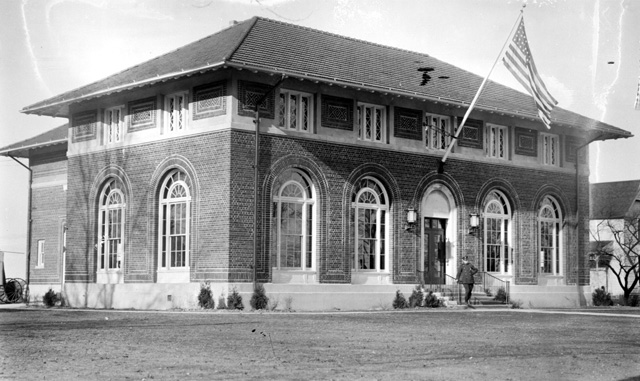
Access to the building was made easier in 1924, when a cement sidewalk along the south side of Vernier Road was extended from Lake Shore Road to the west limits of the Village. It was completed at a cost of .23 cents a square foot (around $4 today) – Source Grosse Pointe Civic News (October 1924). In December 1928, the building became the first sub-station for the Wayne County Library System – the small library occupied one room. Images of the building and library (1930) – courtesy of digitize.gp.lib.mi.us/history/photos/library.
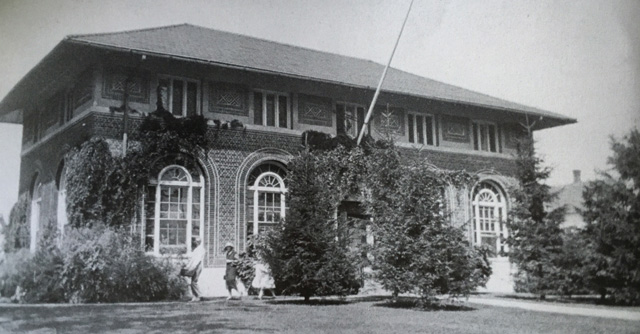
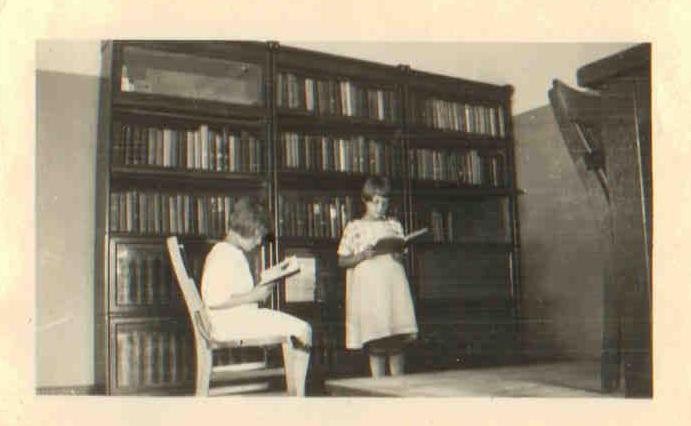
By the early 1980’s the Shores municipal building was badly in need of repair. It was reported in the Detroit Free Press (September 27, 1984) “on August 4, 1982, the ceiling in the village manager’s office lowered itself down to the floor, burying the office in a ton of debris. Structural engineers called in afterwards found similarly weak ceilings throughout the first floor.” Thankfully instead of tearing the building down the residents of Grosse Pointe Shores voted to keep the Kahn designed structure. The article further explains “four months after the ceiling collapsed, residents voted to approve a $1.3 million bond issue to bring the 1915 building up to 1984 standards.” Arthur M. Woodford in his book The Village of Grosse Pointe Shores wrote “the decision was made to completely renovate the interior, build an addition for an elevator, and expand the garage area for public safety vehicles. The work was completed in the fall of 1984, and the village received several awards for the work while preserving the integrity of the exterior of the original Albert Kahn designed building.” Architect Robert C. Wakely Jr. oversaw the remodel, “we went to great lengths to blend the new design with Kahn’s original work.” The article explains how “inside the original front entrance 10-foot glass and wood doors topped with Federalist-style arched windows lead to the new council and court chambers (where village offices used to be) and a new public safety department. The six arched windows along the building’s front and side were also restored”. Images courtesy of: Detroit Free Press (Mar 29, 1984, and Feb 18, 1988).
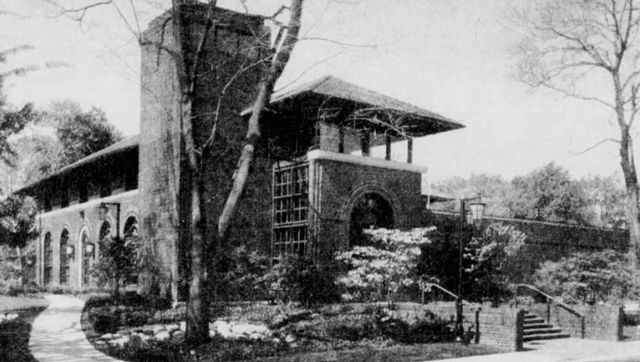
Arthur M. Woodford’s book also states, “the renovations in 1984, also involved moving the old horse and dog fountain from Osius Park to a newly landscaped area at the buildings main entrance.” In 2014, the fountain celebrated its 100th birthday and was completely refurbished. It was also returned to its original pale blue color. During the 1990’s the municipal building underwent more renovations, and an addition was added, once again designed by Robert C. Wakely Jr. Image courtesy of Google.com
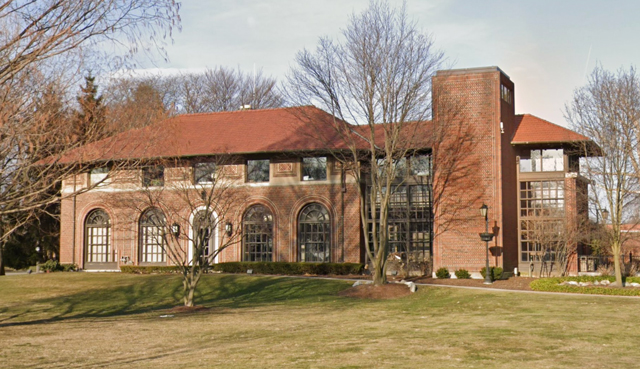
Today the Grosse Pointe Shores municipal building remains an architectural icon, fully preserved and restored by the award-winning renovations that were made in 1984. At the time of completion, a local resident stated, “the tendency has been to tear things down along Lake Shore and we’re happy to have saved our building and renovated it.” Source: Detroit Free Press (September 27, 1984). And given that so many Kahn structures have been razed, it wasn’t just the right decision, but an important one.
*Photos courtesy of the Higbie Maxon Agney archives unless stated.
** Research, information, and data sources are deemed reliable, but accuracy cannot be fully guaranteed.
Written by Katie Doelle
Copyright © 2023 Katie Doelle


